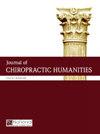中国广东省医院手工治疗的可得性:一项基于网络的横断面调查
Q3 Health Professions
引用次数: 0
摘要
目的了解广东省省级医院手工治疗(MT)服务的质量和需求,包括其规模、技术设备、治疗范围、知识背景和面临的挑战。方法于2021年10月至2021年12月,在广东省共有48家医院参与了一项基于网络的自我报告调查。使用多元泊松回归模型来确定影响这些做法的因素。结果这项调查揭示了患者对MT的大量需求,特别是那些患有肌肉骨骼疾病的患者。在过去三年中(2019-2021年),每个MT部门每年接待9,655名患者,最大的医院每年接待多达12,000名患者。此外,寻求MT服务的患者患病率与特定诊断和治疗方案呈负相关(β=0.857; OR = 2.356; 95% CI[2.339, 2.373])。然而,只有37.5%的医院拥有自主的MT部门,这可能是缺乏综合发展计划的原因(β=0.249; OR = 1.282; 95% CI[1.113, 1.477])。此外,关于机器移植的文献在数量和质量上仍然不足,主要是由于技术设备的缺乏(β=2.606; OR = 13.550; 95% CI[7.797, 23.549])。结论尽管患者对MT的需求不断增长,但广东省MT科室的范围有限,存在技术设备和教育资源的不足。MT主要应用于骨科病例,以康复科学和中医为基础。本文章由计算机程序翻译,如有差异,请以英文原文为准。
Availability of manual therapy in hospitals in the Guangdong province, China: a cross-sectional web-based survey
Objective
This study aimed to investigate the quality and needs of manual therapy (MT) services in Guangdong provincial hospitals, including their scale, technological devices, scope of treatments, knowledge background, and challenges.
Methods
A total of 48 hospitals across the Guangdong province participated in completing a Web-based, self-report survey between October 2021 to December 2021. Multiple Poisson regression models were used to determine factors affecting these practices.
Results
This investigation revealed a substantial demand for MT among patients, particularly those with musculoskeletal disorders. Over the past three years (2019-2021), each MT department attended to 9,655 patients annually, with the largest hospital accommodating up to 12,000 patients annually. Additionally, the prevalence of patients seeking MT services exhibited an inverse correlation with specific diagnoses and treatment regimens (β=0.857; OR = 2.356; 95% CI [2.339, 2.373]). However, only 37.5% of hospitals had autonomous MT departments, possibly contributing to the absence of comprehensive development plans (β=0.249; OR = 1.282; 95% CI [1.113, 1.477]). Moreover, the literature on MT remains scant in quantity and quality, mainly due to a shortage of technical equipment (β=2.606; OR = 13.550; 95% CI [7.797, 23.549]). There persisted a notable discrepancy in the adoption and advancement of MT.
Conclusions
Despite the growing demand for MT among patients, MT departments in Guangdong are limited in scope, encountering shortages of technological devices and educational resources. MT is predominantly applied to orthopedic cases, grounded in rehabilitation science and Traditional Chinese medicine.
求助全文
通过发布文献求助,成功后即可免费获取论文全文。
去求助
来源期刊

Journal of Chiropractic Humanities
Medicine-Complementary and Alternative Medicine
CiteScore
1.70
自引率
0.00%
发文量
7
 求助内容:
求助内容: 应助结果提醒方式:
应助结果提醒方式:


